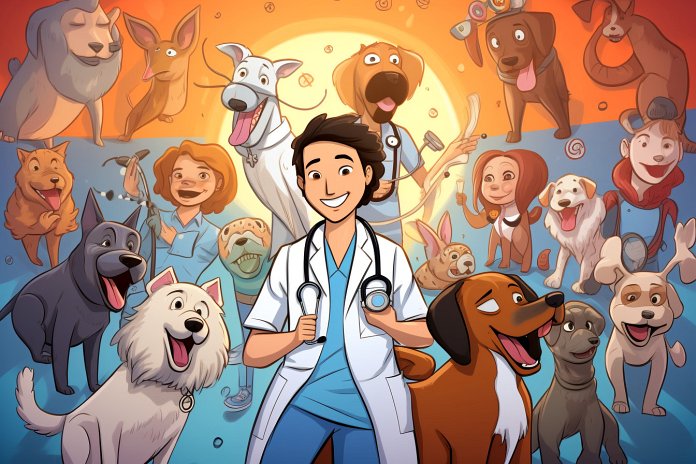
Rabies is a well-known disease in animals that poses a threat to humans as well. Many of us associate rabies with the image of a wild animal with frothing foam at the mouth. While some dogs have survived rabies, it is usually fatal for animals. However, if the virus is not strong in the infected animal, there is a chance that the bite victim may not develop rabies.
Spread and Susceptibility to Rabies
Rabies is easily transmitted when an infected animal bites a non-infected one. While skunks, raccoons, foxes, coyotes, and bats are commonly associated with rabies, dogs are also susceptible to the virus. The incubation period for dogs is usually two weeks to four months, and various factors determine how quickly the virus reaches the nervous tissue.
Signs of Rabies in Dogs
Recognizing the signs of a rabid animal is crucial in potentially saving your dog. Rabies is usually transmitted through bites, scratches, or infected blood or saliva entering an open wound. There are different phases of rabies, and dogs may experience one or all three. Initially, dogs may appear restless, aggressive, irritable, and may lick, bite, or chew the infected area. As the virus progresses, dogs may become sensitive to light, have difficulty swallowing, breathe heavily, hide in dark places, eat strange items, lose control over their throat, and foam at the mouth.
Understanding these signs is especially important if you live in a rural area where your dog may come into contact with rabid animals.
Body Language and Other Signs
Additional signs that your dog may have rabies include growling, chewing, scratching, weakness, fever, irritability, seizures, biting or snapping, heavy breathing, choking sounds, starting to eat strange things, hiding in dark places, foaming at the mouth, jaw hanging open, disorientation, dilated pupils, trembling, and fear of water.
History of Dogs and Rabies
Rabies has been a tragic disease that has claimed the lives of many animals, including dogs. Vaccinations have played a significant role in protecting pets from rabies. In 2015, rabies caused 17,400 deaths worldwide, affecting dogs, wild animals, and humans. Dogs are the primary hosts of the virus in Asia, Africa, and parts of the Americas, mainly due to the lack of effective mandatory vaccination in rural areas. The first rabies vaccination for humans was developed in 1885, with a more effective version introduced in 1908. However, a rabies vaccination for dogs was not available until 1979.
Treating Dogs for Rabies
As there is no approved treatment for dogs with rabies, anti-rabies serums are not widely used. Suspected rabid dogs must be isolated and closely monitored. If they display any symptoms of rabies, euthanasia is likely necessary. The virus attacks the nervous system, causing inflammation and damage to the brain, spinal cord, and muscle tissue, making it difficult to treat. This highlights the importance of rabies vaccinations in protecting our beloved pets.
“Protecting our beloved pets from the deadly threat of rabies”

Tips & Things to Know
1️⃣ Understand the Signs: Be aware of the signs of rabies in dogs which include restlessness, irritability, fever, heavy breathing, eating strange items, and foaming at the mouth. In case your dog displays these symptoms, it is crucial to get them to a vet immediately.
2️⃣ Vaccination is Key: Vaccination is the most effective way to protect your pet from rabies. Despite the availability of anti-rabies serums, they are not widely used and rabies remains an untreatable disease once contracted. Therefore, it is crucial to regularly vaccinate your pets, especially if you live in rural areas where they might come into contact with rabid animals.
3️⃣ Quarantine if Suspected: If a dog is suspected of having rabies, it must be kept in isolation and monitored closely. If the dog starts displaying symptoms, it may have to be euthanized due to the serious damage the rabies virus can cause to the nervous system, including brain inflammation and damage to spinal cord and muscle tissue.
Frequently Asked Questions, Answered ✅
1. What are the signs that a dog may have rabies?
– Restlessness, aggression, irritability, fever, biting or snapping, heavy breathing, foaming at the mouth, disorientation, dilated pupils, trembling, fear of water, choking sounds, weakness, and hiding in dark places.
2. How is rabies transmitted to dogs?
– Rabies is usually transmitted through a bite from an infected animal, but it can also be spread through scratches or infected blood or saliva getting into an open wound.
3. Can dogs survive rabies?
– In most cases, dogs infected with rabies do not survive. However, if the virus is not very strong in the infected animal, there is a chance that the bite victim may not develop rabies.
4. How long is the incubation period for rabies in dogs?
– The incubation period for rabies in dogs is usually two weeks to four months.
5. What is the importance of rabies vaccinations for dogs?
– Rabies vaccinations are crucial for protecting dogs from the deadly virus. Vaccinations have helped eliminate the threat of rabies in many parts of the world and are the most effective preventive measure against the disease.